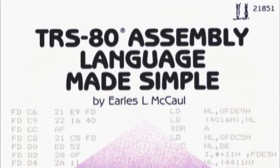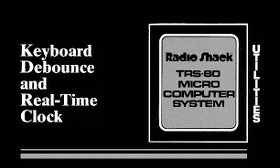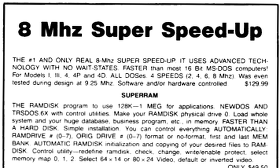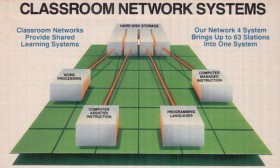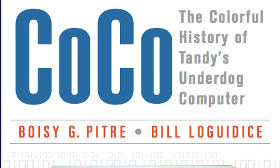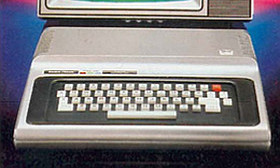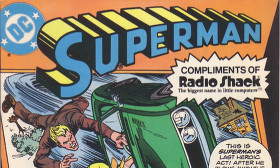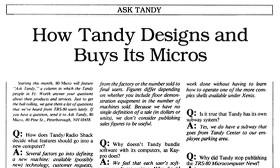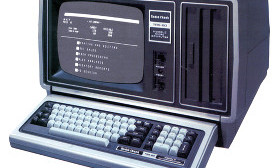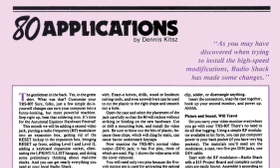There were many excellent books written for people who wanted to learn about TRS-80 Model I assembly language programming, such as TRS-80 Assembly Language Programming by William Barden or Programming the Z80 by Rodnay Zaks. But my favorite book was a less famous one called TRS-80 Assembly Language Made Simple by Earles L. McCaul. I think TRS-80 Assembly Language Made Simple was the best book for teaching not just the specifics of assembly language, but also the mindset for effective assembly language programming.
According to an account by Earles L. McCaul, TRS-80 Assembly Language Made Simple came about through his work as an instructor at Arizona Western College in Yuma, Arizona. At the time, Arizona Western College offered only two microcomputer programming courses: one for BASIC and another for Intel 8080 machine language. He proposed creating an “intermediary” course that dealt with programming in assembly language for the TRS-80. His proposal was accepted by the college on the condition that he find an appropriate textbook for the course.
(Read more...)
After the introduction of Level II BASIC in 1978, many TRS-80 Model I users began noticing a curious behavior. Pressing a key on the keyboard would sometimes generate multiple identical characters on the screen, as if the key had been pressed more than once. At first, only one key would be affected, but later the problem would spread to more keys. The problem, known as keybounce, made typing very difficult and became known as the Model I’s biggest flaw.
Radio Shack wrote about the problem in the November 1978 issue of the Radio Shack Microcomputer Newsletter (later known as the TRS-80 Microcomputer News):
Many of you have experienced what we call “Keybounce” – multiple letters from one keystroke. In almost every case it is traceable to contaminated key contacts. It can be dust, dirt, cigarette smoke, or almost any kind of residue. Usually, this doesn’t occur except in Level II computers, and after some use.
(Read more...)
The Seatronics Super Speed-Up was the fastest commercially available speed-up board for the TRS-80 Model 4. It could double the Model 4 speed to 8 MHz, without requiring any performance sapping memory wait states. The Super Speed-Up was sold by Seatronics, a company based in Maastricht, Holland, for $129.00. (A review in 80 Micro identified Sylvester Technologies of Cypress, Texas as the United States distributor, but that appears to have been a mistake.)
The Super Speed-Up was also available for the TRS-80 Model I and Model III, but the Model 4 version was the most common.
Installation of the Seatronics Super Speed-Up was more involved than other Model 4 speed-up boards. The first step of the installation was simple, consisting of removing the Z80 and plugging the Super Speed-Up board in its place. But subsequent steps involved cutting pins, moving wires, straightening a pin, running a wire, and possibly soldering a resistor. David Dalager in Computer News 80 described the installation as “not for the average computer user.”
(Read more...)
The Network 4 was a classroom networking system sold by Radio Shack that was popular in computer labs in the mid-1980’s. It allowed one computer used by a teacher to be connected to up to 63 student computers. The Network 4 was based around the TRS-80 Model 4, well after MS-DOS computers became more common. It was probably one of the biggest reasons the TRS-80 Model 4D remained in the Radio Shack catalog until 1990.
In the early days of microcomputers, schools were viewed as a major market for computers. The Radio Shack Education Division, formed in 1980, aggressively promoted the use of computers in schools. In 1985, they stated that “Radio Shack is the leading marketer of microcomputers to schools, with more TRS-80 computers in America’s schools than any other brand.”
Radio Shack had been pushing the idea of connecting computers in schools since 1980 under the name “TRS‑80 Network”:
(Read more...)
When most people think of the Radio Shack TRS-80, they probably think of the TRS-80 Model I, III, and 4. But Radio Shack also sold another computer line, the TRS-80 Color Computer.
CoCo: The Colorful History of Tandy’s Underdog Computer by Boisy Pitre and Bill Loguidice explores the somewhat forgotten history of the Color Computer line. It tells the story of the Radio Shack Color Computer (fondly nicknamed the CoCo), starting with its development and introduction in 1980. It also contains additional information that helps to put the Color Computer within the broader context of computers at the time, including a chapter about the popular RAINBOW magazine for Color Computer users. The book doesn’t end when Radio Shack discontinued the Color Computer 3 in 1990; it continues with more stories about the companies and people who still supported the Color Computer after the “official” end.
(Read more...)
The TRS-80 Color Computer, commonly nicknamed the CoCo, was the first in Radio Shack’s line of inexpensive home computers. Introduced on July 31, 1980 (the same day as the TRS-80 Model III and the TRS-80 Pocket Computer), the Color Computer was also known as the Colour Computer outside of the United States, and later as the Color Computer 1.
The Color Computer was part of Radio Shack’s attempt to diversify their computer product line. Costing only $399.00 for its basic model, it was designed to compete with other lower-cost computers, such as the Atari 400 and the Commodore VIC-20. But the Color Computer inspired a wide range of uses, multiple support magazines, and a vibrant third-party software and hardware market. The Color Computer series was probably the best selling of Radio Shack’s own computer models.
(Read more...)
The TRS-80 Computer Whiz Kids (later renamed The Tandy Computer Whiz Kids) was a comic book series that was created by the Radio Shack Education Comic Book Program. The series consisted of eleven issues, running from 1980 to 1992, which were distributed for free to schools. Any teacher (writing on school letterhead) could request a free packet of fifty comic books from Radio Shack.
The comic books focused on classmates Alec and Shanna and their teacher, Ms. Wilson. Alec and Shanna were the so-called TRS-80 Computer Whiz Kids. Ms. Wilson, her students, and the many visitors to the classroom all made frequent use of many different Radio Shack products.
(Read more...)
“Ask Tandy” was a column that appeared in 80 Micro from the November 1984 to the September 1985 issues. It was described as “a column in which the Tandy people in Ft. Worth answer your questions about their products and services.” “Ask Tandy” was an official source of TRS-80 information from the notoriously secretive Radio Shack.
Because 80 Micro was the most popular magazine (by far) for Radio Shack TRS-80 users, cooperation from Radio Shack might have seemed like an obvious idea. But the relationship between Radio Shack and 80 Micro had always been strained, particularly while Wayne Green was still publisher.
(Read more...)
The TRS-80 Model II was the first in the line of Radio Shack business computers that eventually included the Model 16, Model 12, and Tandy 6000. It was introduced at the June 1979 National Computer Conference in New York City. Radio Shack began taking orders that month for delivery in October, shipping 1,000 Model II’s by the end of year.
The introductory price for the Model II was $3450.00 for the 32K version (catalog number 26-4001) and $3899.00 for the 64K version (catalog number 26-4002). A 32K system could be later upgraded to 64K by purchasing the 32K add-on (catalog number 26-4102) for $449.00.
The Model II was actually the second business computer that Radio Shack sold. The previous year, Radio Shack offered the Tandy 10, a relabeled ADDS System 50. The Model II cost less than half the price of the Tandy 10, yet was far more powerful.
(Read more...)
“80 Applications” was a popular column that first appeared in the January 1980 premiere issue of 80 Microcomputing. Written by Dennis Báthory-Kitsz, “80 Applications” covered a wide range of TRS-80 related hardware projects and ideas.
The first “80 Applications” column was only one page but it soon grew to become one of the most detailed columns in 80 Microcomputing. As that initial column promised:
In the coming months, this column will present unusual applications of the TRS-80 in everyday and not-so-everyday life. Hardware and software extensions and fixes will be described, and some of the fascinating inner workings of this first computer-for-the-people will be revealed.
(Read more...)
